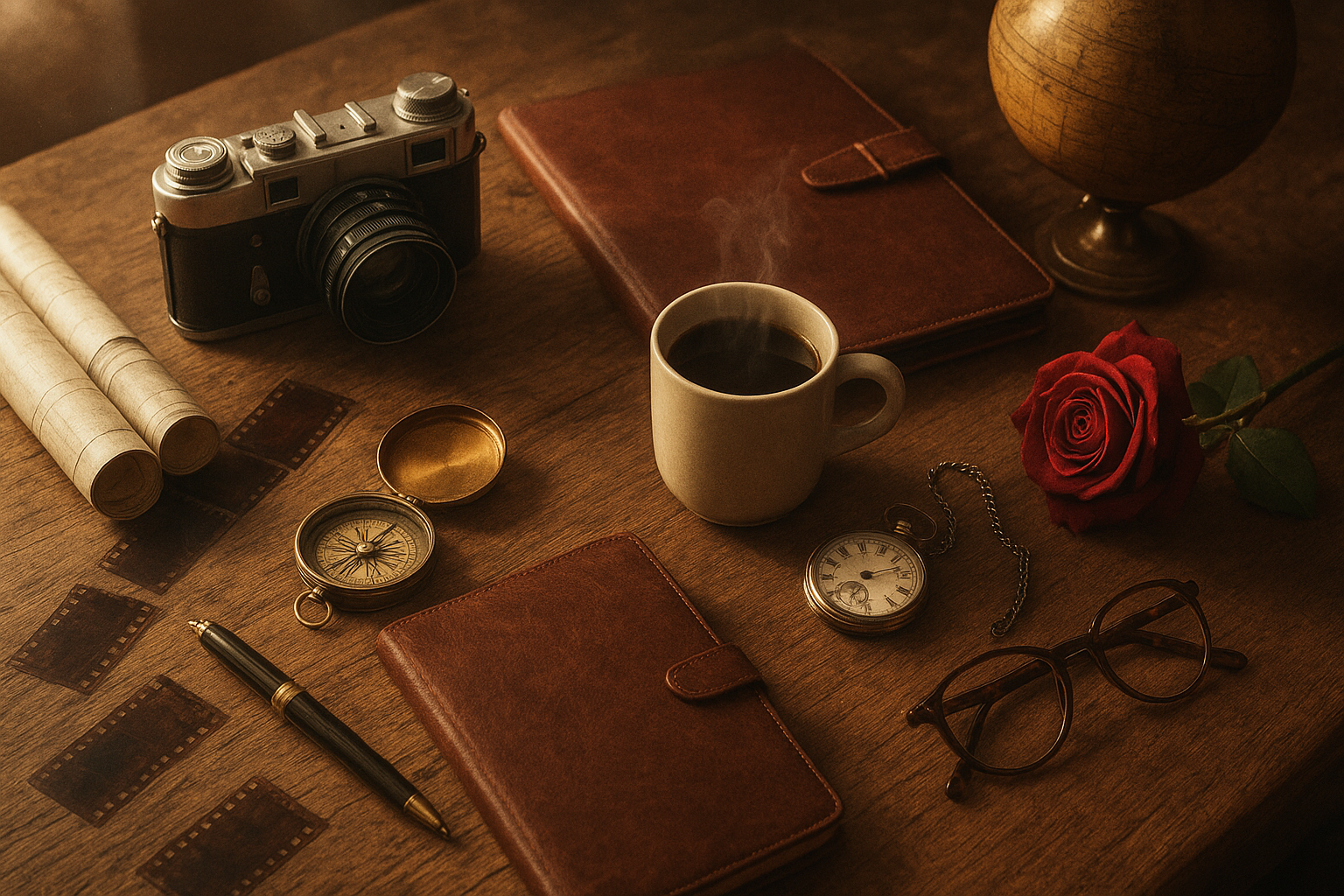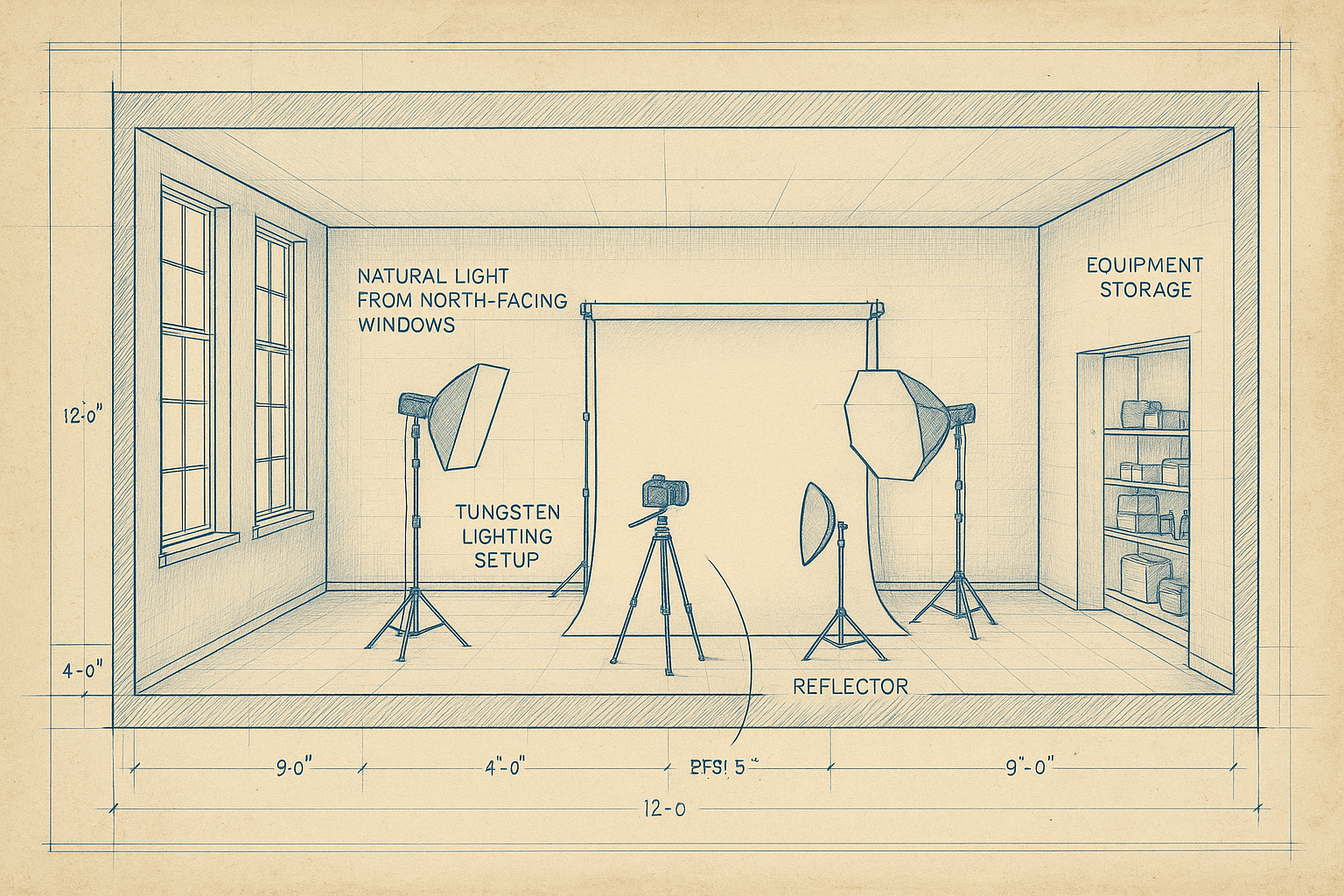GPT-5 Review for Creatives: Visual AI & Vibe Coding
GPT-5’s new visual intelligence and ‘vibe coding’ tools promise better photography analysis, creative strategy, and AI-assisted design for professionals.
OpenAI just dropped GPT-5 with bold claims about visual intelligence—but does it live up to the hype for photographers, marketers, and designers?
Another day, another "revolutionary" AI release. OpenAI officially launched GPT-5 on August 7, 2025, promising significant improvements in visual processing and creative capabilities. But we've heard these promises before, haven't we?
As someone who's watched countless AI launches promise the moon and deliver a flashlight, I approached GPT-5 with healthy skepticism. The real question isn't whether it's technically impressive—it's whether it actually solves the problems creative professionals face every day. After 24 hours of testing, the answer is... complicated.
The Visual Intelligence Claims
OpenAI claims GPT-5 excels across a range of multimodal benchmarks, spanning visual, video-based, spatial, and scientific reasoning. On paper, this stronger multimodal performance should mean ChatGPT can reason more accurately over images and other non-text inputs—whether that's interpreting a chart, summarizing a photo of a presentation, or answering questions about a diagram.
But here's the million-dollar question: do these benchmark improvements actually translate into practical benefits for working creatives? The technical specs sound impressive, but benchmarks and real-world application are often very different things. Let’s try a couple prompts…
Prompt 1: Create a detailed product photography scene with exactly 12 distinct objects: a vintage camera, leather portfolio, brass compass, fountain pen, pocket watch, coffee mug with steam, scattered film negatives, rolled blueprints, antique globe, reading glasses, leather-bound journal, and a single red rose. Arrange them on a weathered oak desk with dramatic window lighting. Each object should cast realistic shadows and have proper depth of field. Style: commercial photography, warm color grading, film grain texture.
ChatGPT-5 generates a reasonably photorealistic image
Prompt 2: Generate a cross-section architectural diagram of a modern photography studio. Include: natural light from north-facing windows, tungsten and LED lighting setups, backdrop systems, camera positions, reflector placement, and equipment storage. Use technical blueprint style with measurements, annotations, and a vintage blueprint aesthetic. Add subtle wear and aging effects to the paper texture.
ChatGPT-5 creates an architectural diagram with mostly accurate lettering
For Photographers: Revolutionary or Incremental?
OpenAI suggests GPT-5 could help analyze entire portfolios and identify strong compositions, optimal cropping, and technical issues. The promise is compelling: imagine an AI that can sift through 500 wedding photos and surface the best shots, or help sequence images for maximum emotional impact.
But does it actually deliver? The model's ability to span visual, video-based, spatial, and scientific reasoning sounds impressive in theory. The real test is whether it can understand the subtle storytelling elements that separate good photography from great photography, something that requires both technical knowledge and emotional intelligence.
Early reports suggest it can analyze composition and suggest contexts for different platforms (Instagram vs. print vs. client galleries), but the jury's still out on whether these suggestions actually improve creative outcomes or just add another layer of digital noise to cut through. Please share your results with us, we’d be curious to hear your experience.
For Marketers: Better Taste or Better Marketing?
According to OpenAI, GPT-5 exhibits "better taste" than other AI models on creative tasks—a subjective claim that's inherently difficult to verify. The company suggests this translates into improved visual strategy capabilities, from analyzing brand consistency to predicting which visual elements might perform better with target demographics.
The question is whether "better taste" actually means anything concrete for working marketers, or if it's just a marketing buzzword. Can GPT-5 really understand the subtle psychology behind color choices and brand positioning? Or is it simply better at pattern matching from its training data?
If the claims hold up, GPT-5 could potentially help analyze visual consistency across campaigns and suggest complementary palettes aligned with brand psychology. But the proof will be in real campaign performance, not in demo videos. We created a simple test using their highly touted vibe coding improvements.
Welcome to the "Vibe Coding" Era
Here's where things get really interesting. OpenAI's post-training lead, Yann Dubois, said the model opens up "a whole new world of vibe coding," or the ability for noncoders to create fully deployable websites and apps just by describing what they want to build and letting an AI agent do the work.
I tried the following prompt:
Build a web application that analyzes uploaded brand images and suggests complementary color palettes. Include:
- Drag-and-drop image upload area
- Real-time color extraction showing dominant colors with hex codes
- Suggested palette variations (monochromatic, complementary, triadic)
- Color accessibility checker (contrast ratios)
- Export functionality for Adobe Creative Suite formats
- Visual preview showing how colors work together
- Modern interface with smooth animations
- Include color psychology descriptions for each palette
- Make it look professional enough for client presentations
First it returned an error: “RunError: Build failed with 1 error:”
internal:user-component.js:27:9: ERROR: No matching export in "external:https://cdn.jsdelivr.net/npm/file-saver/+esm" for import "saveAs"
But you can click on the errors and have ChatGPT-5 fix the bug.
After running the “fixed” code, a second error popped up, then ChatGPT-5 again fixed it. Here’s a screenshot, and it was fully functional, aside from a few cosmetic quirks:
ChatGPT-5 Vibe Coding App
So it doesn’t always get the vibe coding right the first time. That’s been my experience with all vibe coding platforms though - they often claim to have built a fully functioning program but they are in fact rife with errors that take quite a bit of time to fix. Having said that, ChatGPT-5 seems to fix its own errors handily and create a usable prototype that can then be refined with other tools like Claude Code or Cursor’s Agent.
Real-World Creative Applications
Let me share some specific scenarios where GPT-5 is already changing the game:
Campaign Concepting: Upload your client's existing materials, describe your target audience and campaign goals, and GPT-5 will generate multiple creative directions with specific visual treatments, color psychology rationales, and even media placement strategies.
Brand Identity Development: Early testers also noted its design choices, with a much better understanding of things like spacing, typography, and white space. GPT-5 can analyze your client's industry, target market, and brand values to suggest logo concepts, typography pairings, and comprehensive visual systems that feel authentically crafted, not AI-generated.
Content Strategy: For commercial illustrators, GPT-5 can analyze market trends, identify visual gaps in specific niches, and suggest illustration styles and subjects that have commercial potential. It's like having a market research team and art director rolled into one.
The Technical Magic Behind the Creativity
GPT-4 included limited vision capabilities, but GPT-5 offers true multimodality, supporting text, image, audio, and video inputs within one unified model. This allows ChatGPT-5 to handle complex tasks like reading a graph, analyzing audio tone, or writing captions for video, all in one workflow.
This unified approach means you're not juggling multiple AI tools anymore. One conversation can flow seamlessly from analyzing your brand's visual equity to generating social media concepts to creating the actual assets, all while maintaining creative coherence and strategic alignment.
GPT-5 also introduces a 1 million token context window, dwarfing GPT-4's limit of 128,000 tokens. This means GPT-5 can track context across long documents, dense codebases, or entire user sessions without losing coherence.
For creative professionals, this translates to AI that remembers your entire creative brief, references previous concepts throughout the project, and maintains design consistency across all deliverables without constant re-briefing.
The Reliability Revolution
According to OpenAI, GPT-5 was 45% less likely to contain a factual error than GPT-4o in tests in which it had web search enabled and used anonymized prompts; when "thinking", GPT-5 was 80% less likely to contain an error than OpenAI o3.
This dramatic improvement in accuracy addresses one of the biggest pain points creative professionals have had with AI tools: unreliable outputs that require extensive human oversight. GPT-5's enhanced reliability means you can trust its creative suggestions and technical implementations enough to build them into your actual client workflows.
The Competitive Edge
GPT-5 is now available to all free users of ChatGPT as their default model. This democratization means your smaller competitors now have access to the same creative intelligence that was previously available only to agencies with massive AI budgets.
The competitive advantage won't come from having access to better AI, it'll come from knowing how to leverage it strategically within your creative process. The photographers, marketers, and illustrators who figure out how to integrate GPT-5 into their workflows seamlessly will be the ones who thrive in this new landscape.
So, Is This Actually a Game-Changer?
Here's the honest answer: it's too early to tell definitively.
GPT-5 represents a significant technical advancement, that much is clear. The enhanced reliability (45% fewer factual errors than GPT-4o) and improved multimodal capabilities are genuine improvements. The "vibe coding" functionality could democratize web development for creatives who previously hit technical walls.
But whether these improvements translate into better creative outcomes depends heavily on implementation. Having access to better AI tools doesn't automatically make someone a better creative professional, it just changes the skill requirements.
The real competitive advantage won't come from having access to GPT-5 (since it's available to everyone). It'll come from understanding how to integrate these capabilities strategically into existing creative workflows without losing the human insight that drives truly innovative work.
The Bottom Line
GPT-5 might be a significant step forward for AI-assisted creativity, but it's not magic. It's a powerful tool that requires thoughtful application and realistic expectations.
For photographers, marketers, and illustrators willing to experiment and iterate, GPT-5 offers genuine opportunities to streamline technical tasks and explore new creative directions. For those expecting it to replace creative judgment and strategic thinking, disappointment awaits.
The question isn't whether GPT-5 will change your creative work, it's whether you'll approach it as a sophisticated instrument that amplifies your expertise, or as a shortcut that bypasses the hard work of developing creative judgment.
Have you tested GPT-5's visual capabilities? What's working, and what isn't? The creative community needs honest assessments, not just hype. Share your real-world experiences below.




